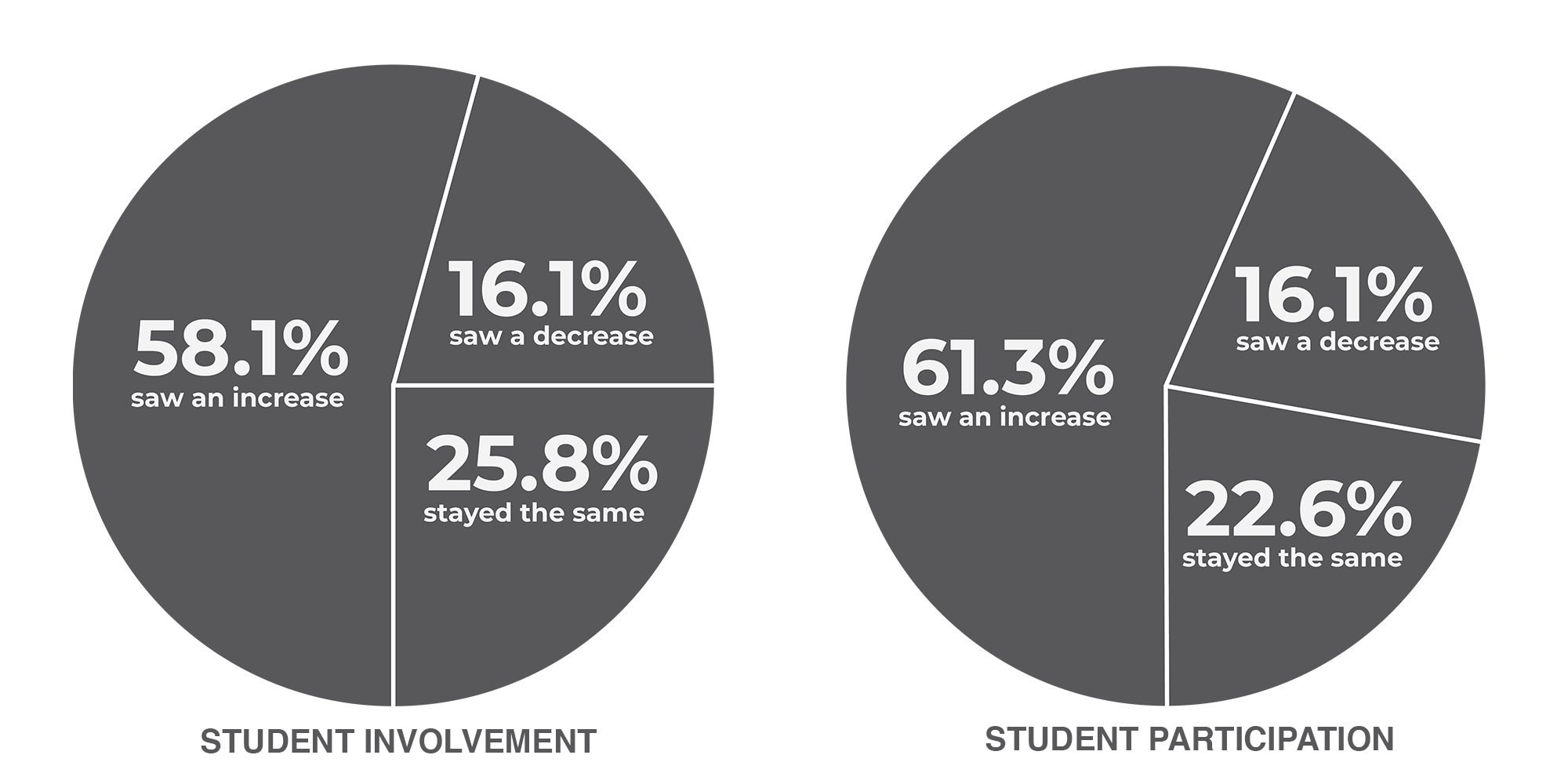
Has student involvement and participation decreased or increased on campus? Students often speculate about Georgia State’s school spirit and their own willingness to get involved, so it was time to go straight to the source.
The Signal conducted a poll with responses from 31 organizations that participated in this semester’s Student Organization Fair. The poll found that, ultimately, it depends on the organization.
The activity of students within student organizations was defined by two concepts. First, involvement was defined as the number of members and ability to retain staff in a student organization – like regularly having new members join. The second part of this is interactions — participation with the organization from non-member students — like students showing up to functions or events.
The poll was given to the member who had been in the organization longest of those present at the Org Fair, allowing them to share their perception of this question as it related to their group.
Overall, 58.1 percent of organizations surveyed saw an increase in membership and 61.3 percent had an increase in involvement with students on campus.
According to these students, Georgia State’s greek life is growing. Eighty percent of sorority and fraternity organizations reported membership increased or stayed the same while 20 percent reported a decline in membership and students interacting with their organization.
Omega Phi Beta Sorority Inc. experienced a decline in involvement.
“People seem to have an increased negative opinion in Greek life in general. This has also been seen on other campuses,” member Angelica Sanchez said.
Groups related to political or social change reported increase in both membership and student participation.
“The political climate we are currently in has facilitated more political involvement among students,” Maria Almanza, College Republican member, said.
This trend is parallel to other political student organizations surveyed. Flora & Fauna, an environmental group, attributed their increased membership to a growing awareness on their concerns.
“People are finally starting to realize the importance of protecting the environment,” member Fiona Fallon said.
The Left, a left leaning political group, reported a decrease in membership and involvement. Member Dontarious Wimberly attributed this to a perceived decrease in overall student interest.
Some organizations are based on local communities, like religious or racial based groups. These groups strictly saw an increase in both membership and participation, with none citing a decrease or lack of change.
Many organizations that saw an increase in membership and involvement said the increase was due to a new executive board, a re-charter of the organization or more advertising of their group on campus.
“Student involvement is a hard nut to crack,” Jeff Benson, the assistant director for Leadership Programs, said. “We have a lot of students that are super involved in their communities, have to work, have families, are commuting and because of that it’s hard for them to find the time to really find involvement.”
Student organizations reported that there has been an increase in student involvement on campus.
“With students’ busy life with work and class and other things, I think involvement is maybe the fourth or fifth priority on their list. Involvement is really important but when you need a paycheck and you need to pay bills it becomes a fourth priority. I think that it changed how students are engaged on campus the way that they invest in their organizations,” Chris Leary, Student Affairs Advisor of the Leadership Development Office at Georgia State, said.
Leary also mentioned that membership in organizations has been “cyclical” over the years. and once leadership leaves or resets, there is usually a decrease in passion among members.
Leary gave some tips on getting students more involved. One of these is that organizations should be “investing in leadership development” because once leadership changes, involvement depends on how active the new executive board is.
He also said there are plenty of resources that only a fraction of students use. The leadership office hosts workshops, trainings and retreats almost every single day of the semester.
“[Workshops cover] how to set goals, how to work within teams, how to manage conflict, how to understand your personal leadership style. There are a lot of different options so that [the leadership office] is a big resource,” Leary said.
Leary had some advice for struggling student orgs: reach out to people who you thought would never join and to get outside the student center when recruiting.
“Instead of just posting on social media and putting a flyer up on campus and hoping that students will come to you, our students really need to branch out in their classes, they need to branch out beyond their just immediate friend group but really start talking to other students and finds students that might have that shared interest,” Benson said.
Benson thinks social media can play a big role in student involvement.
“Social media has done a great job of connecting people, but I think you stay connected only with who you want to be instead of broadening your connections [by only using social media],” he said. “We need to find new ways of engaging students and getting them out of their comfort zones to try out new things.”
The Org Fair had about 700 attendees despite having to reschedule to a Monday due to the university closing for weather. With that, the org fair itself still isn’t at its peak involvement; the largest ever attendance for the fair ever was 1,200 students.
31 Student Organizations polled on activity changes
STUDENT INVOLVEMENT
The number and retention of members at student organizations increased.
58.1 percent saw an increase
16.1 percent saw a decrease
25.8 percent stayed the same
STUDENT PARTICIPATION
The amount of interaction from non-members with student organizations increased.
61.3 percent saw an increase
16.1 percent saw a decrease
22.6 percent stayed the same
